It’s been a while since I posted about the Bittersweet Farewell to our new family in Estes Park, and we have had a whirlwind of activity at the Albuquerque International Balloon Fiesta, and then a week-long visit to Southeast New Mexico as well. I have lots to write about from both of these visits, but I am determined to finish parts 2 and 3 of our visit to Utah and Western Colorado and a few more Estes posts before that.
So, after our visit to Flaming Gorge in Part 1, we woke early in Vernal, Utah, to head over to Dinosaur National Monument. Now, I am not particularly into dinosaurs, but it did sound really interesting, and there was a 24-mile scenic drive that I had read about as well. We left the hotel and as we passed through Vernal, we were again amazed by the incredible pots of flowers along US 40. I mentioned the flowers in my last post, but here is a reminder of how beautiful they were.
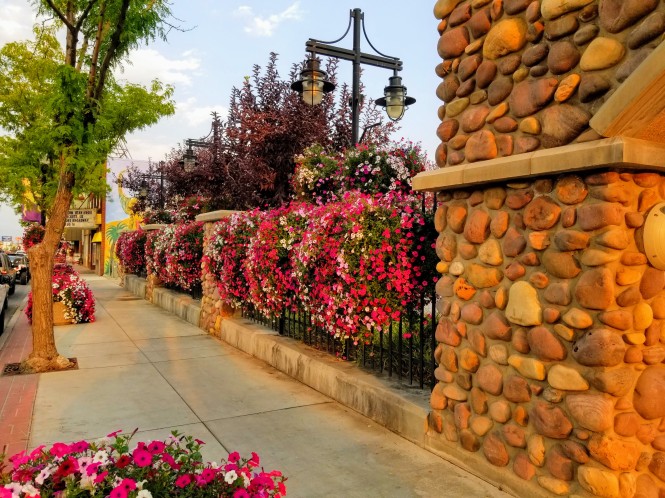
Well, the ‘rest of the story’ is that on this morning, we happened to see water trucks going slowly along each side of the highway, watering each and every pot! For this desert landscape, we knew there had to be a serious solution, so we were excited to see how they managed to keep the flowers lush and beautiful!
Anyway, we made our way over to the entrance to Dinosaur National Monument.
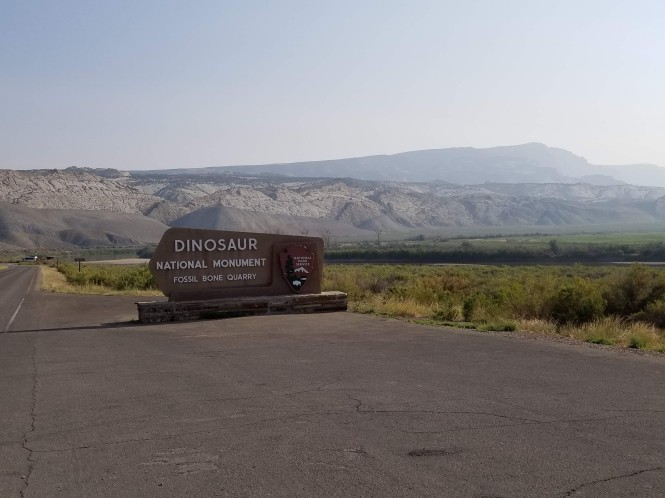
We were traveling on two motorcycles, and unfortunately, there is ONE drawback to the US National Parks Senior Pass, which Jerry holds. The Senior Pass only allows entry to ONE motorcycle! If we had a regular annual pass, that would allow two motorcycles, but we didn’t really need a second pass this year since we had a car. So, we had to go take my motorcycle to an outside parking area, and I had to ride on the back with Jerry. Yes, I pouted, but only for a little while. 😉 I had forgotten how cool it is to not be riding my own bike when it comes to taking photos on the road!
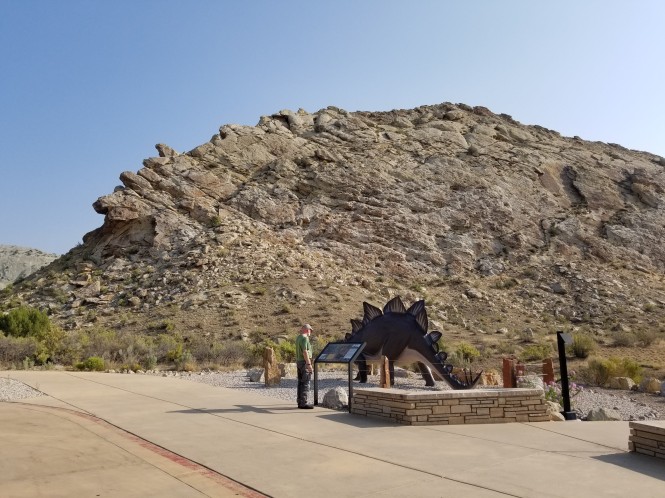
Jerry at the Visitors Center with a dino sculpture, and interesting dino-like rock formation
Our first stop was the Quarry Visitors Center, where we were able to view a short video about the monument, and then catch a tram to the Quarry Exhibit Hall, where over 1,500 dinosaur fossils are visible in a wall of bones in the purpose-built facility. You can even touch a few of the bones!
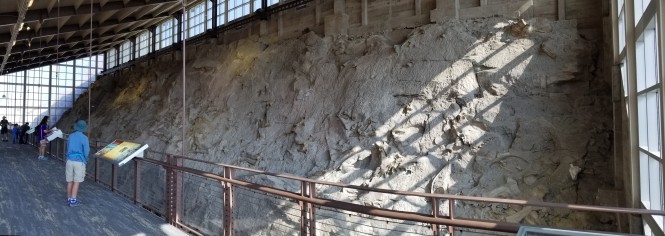
This is an amazing facility to see embedded bones!
So the story behind the monument is that Earl Douglass, in 1909, stumbled upon dinosaur bones near the top of a ridge of Morrison Sandstone. After 15 years of painstaking excavation, a huge portion of sandstone was removed to expose the portion that remains today. Additional excavation was completed by the WPA from 1933-38, and then from 1952-57, the National Park Service (NPS) worked to expose the bones in place, under a tin shelter. The existing Quarry building was the last step in realizing Douglass’ vision of a display that would showcase the bones in place, and quarrying completed in 1992.
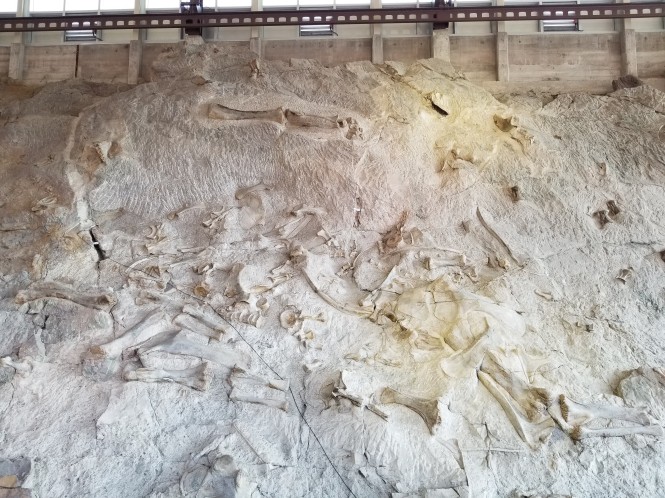
Close up of a section of bones

Skulls and backbones almost intact
So why here, and just…why??? This panel from the Quarry displays explains it better than I could.

A few of the displays in the Quarry hall. The scale is just staggering. These were immense beasts!

The exterior of the Quarry Exhibit Hall
A few shots of the scenery outside the exhibit hall from the tram. Otherworldly!
Our next activity was to follow an auto (motorcycle!) Tour of the Tilted Rocks, a 24-mile round trip that explores some of the 200,000 acres of the monument, after an expansion by FDR in 1938. This expansion not only protected the fossils, but also the deep and colorful canyons of the Green and Yampa Rivers, and the many cultural features left by ancient cultures, settlers, and homesteaders.
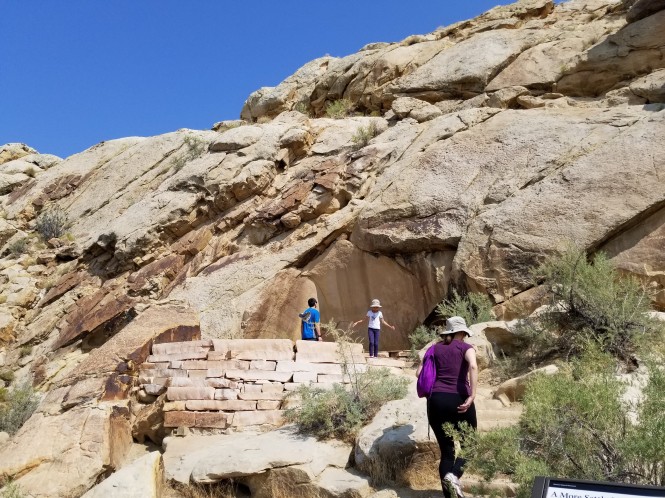
Swelter Shelter
The first stop was at the ‘Swelter Shelter’, named by the researchers who worked there in the blazing heat of summer. Here, pictographs (paintings) and petroglyphs (scratched or carved designs), were made about 1,000 years ago by the people of the Fremont Culture, named for the Fremont River in Southern Utah. A few examples below.
The scenery on this auto tour was remarkable! I have to share several many examples!

Panorama with the Green River in the left and central portion
Our next stop was off the main route, a short detour to Split Mountain, which is named because the Green River has split it in half! What a sight!
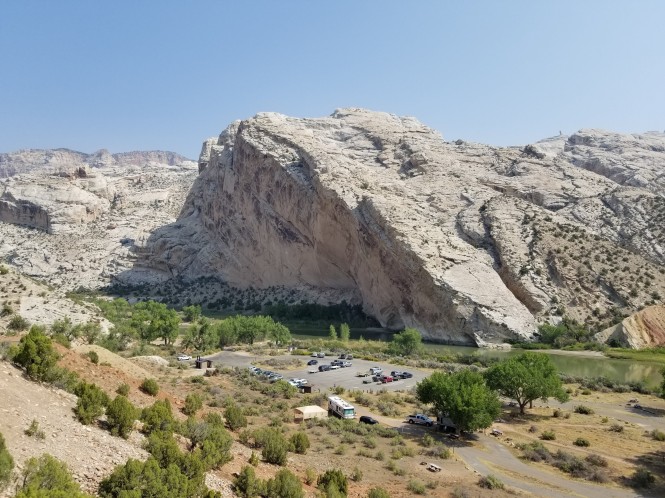
Split Mountain campground and boat launch

Panorama of Split Mountain with mountains beyond and the Green River to the right

The Green River meandering south
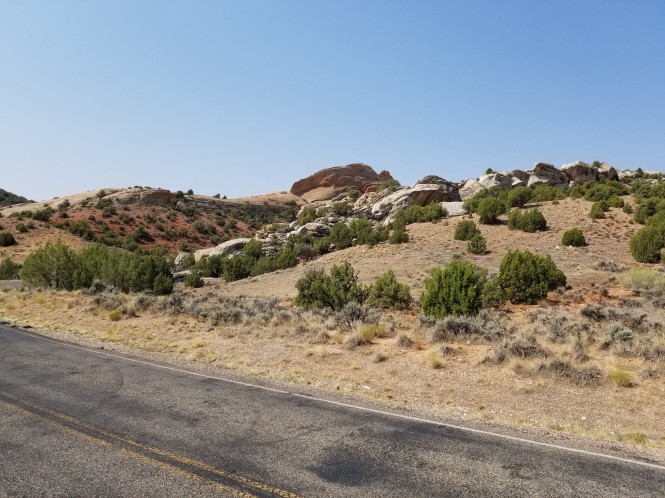
Scenery leaving Split Mountain of the tilted rocks
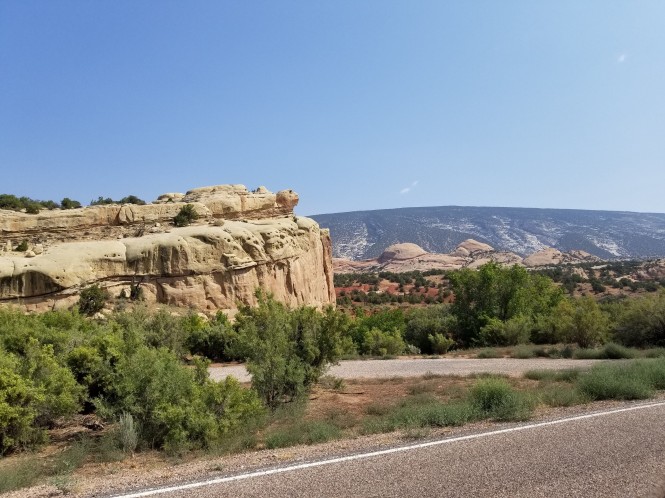
Turtle Rock

Elephant Toes Butte
Another petroglyph stop was next…this art is so amazing, and also open to interpretation by the viewer since no one really knows the meaning intended by the original artists. Except perhaps, their descendants who might have been lucky enough to have them verbally passed down through generations.
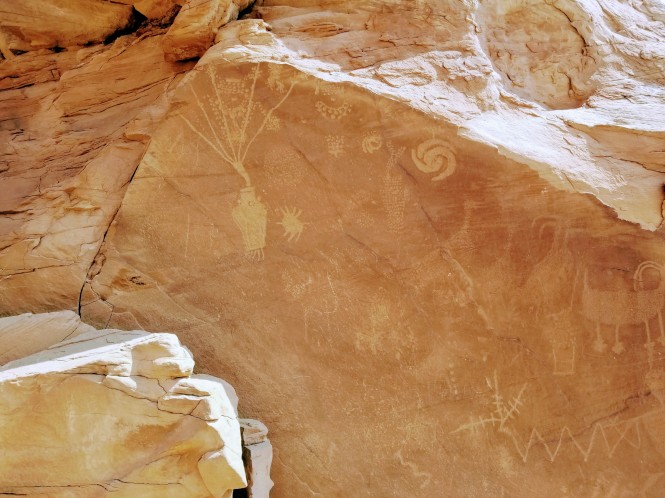
Note the ‘circle of life’ top right…my interpretation!
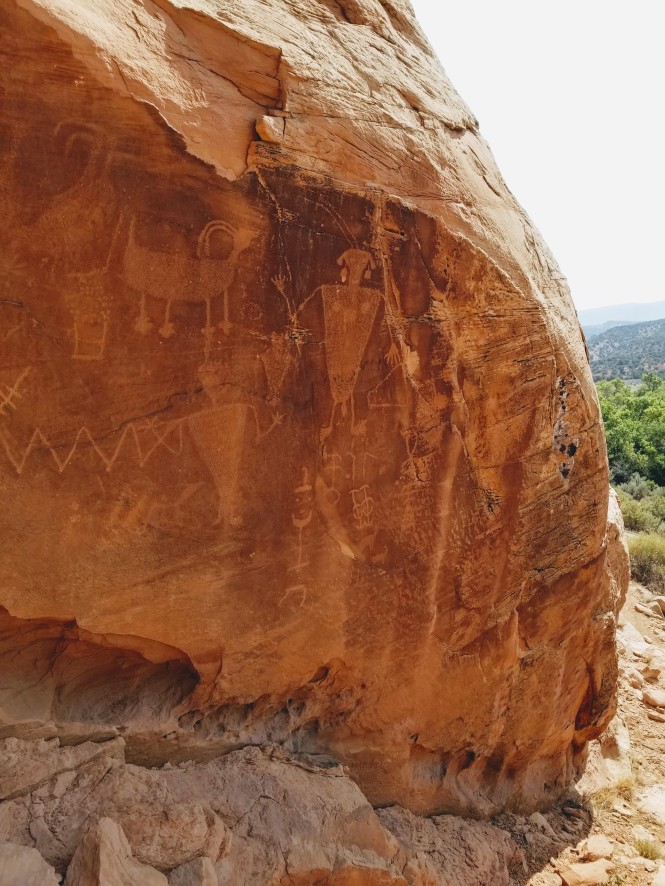
Many varied images: animals, people, symbols
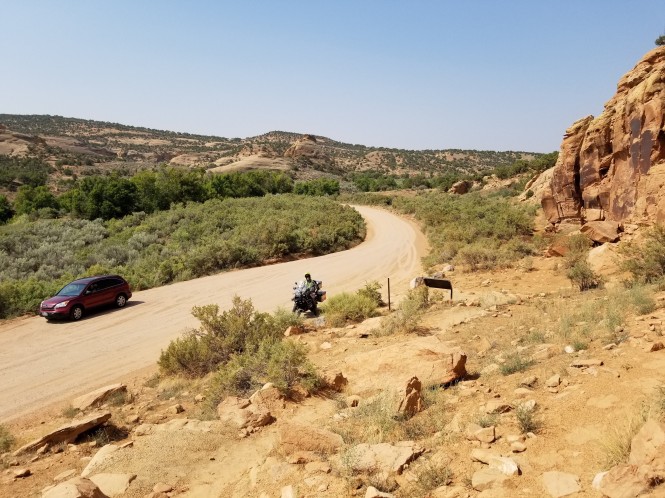
My love, waiting patiently ❤
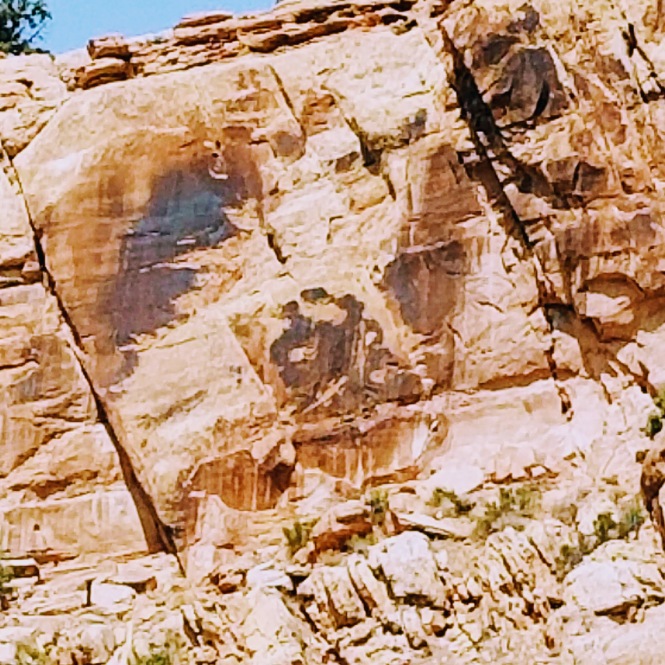
Further down the road, a clear lizard in dead center, on a huge cliff!
Our next stop, at the end of the route, was at the homestead of hardy pioneer Josephine Basset Morris, who settled in this remote area by herself in 1914. She built several cabins here, this one constructed in 1935, with dirt floors.

Josie’s last cabin
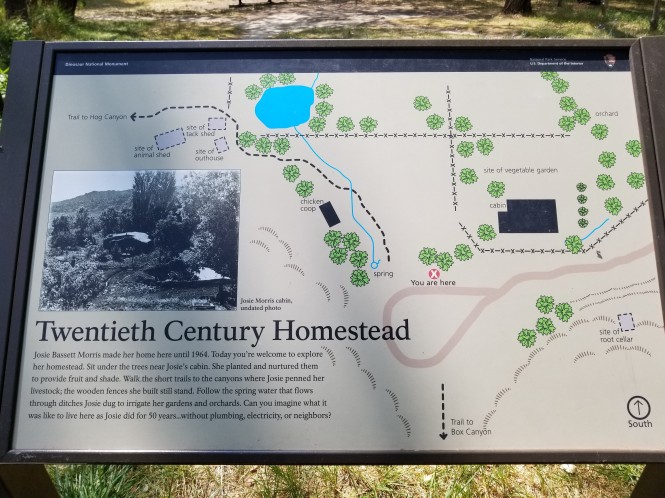
A pictorial of her homestead
This site blew me away. Josie provided for herself by raising and butchering livestock, canning from her garden, and drinking from a spring. Her heat was from wood, and she had no electricity. She married five times but ultimately chose to live a single life in isolation and solitude. She died at 89 after a fall on some ice, in 1964. Imagine living into the 1960s without electricity or running water!
The scenery on the return trip was just as varied and stunning! I will let the photos do the talking here.

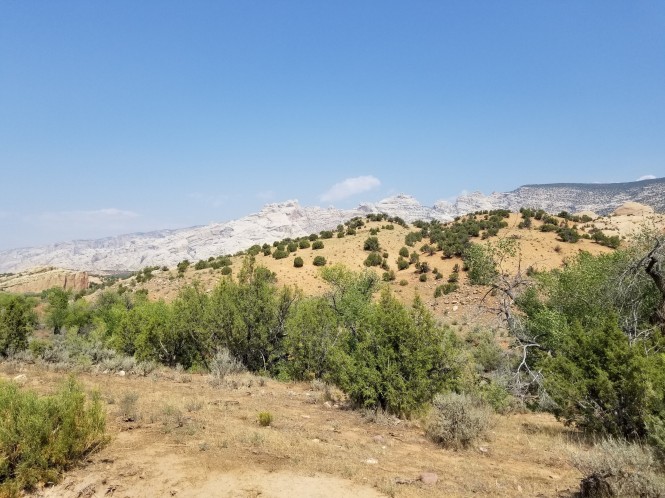
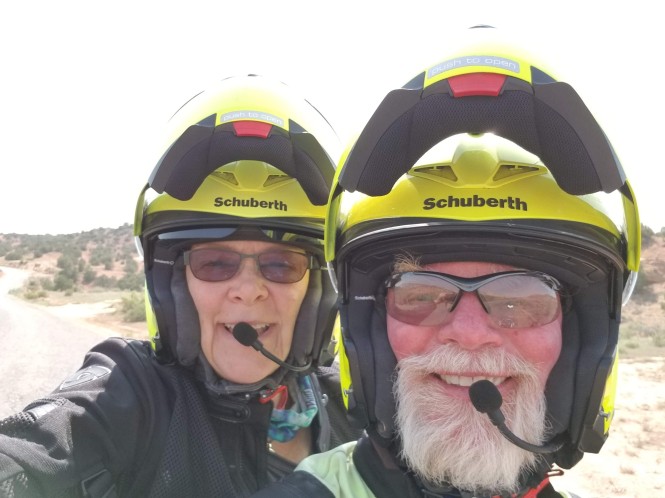
A two-up selfie is rare enough to include!
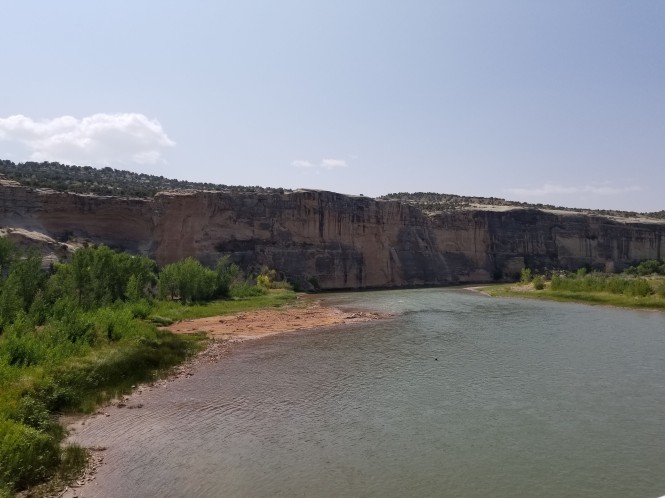
Massive cliffs above the Green River

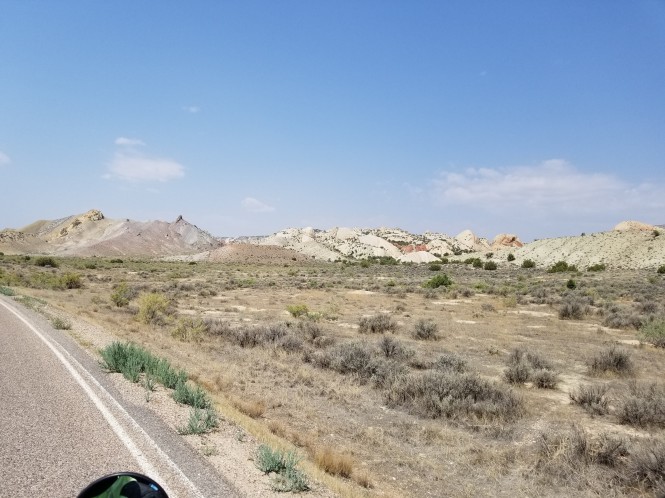
So many varied colors on the way back to the visitors center
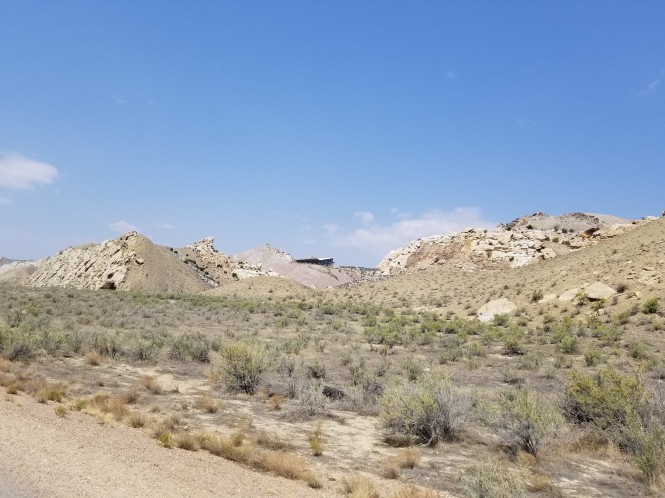
The Quarry Exhibit Hall peeking over the landscape
I hope that you’ve enjoyed this visit to Dinosaur National Monument. There is truly so much to see, we really only scratched the surface due to the short timeframe of our three-day adventure from Estes Park.
And finally, the third part of this saga, covering Colorado National Monument, in Grand Junction, is available at this link. Please join us again soon, as the adventures continue!








[…] like to go directly to Part 2 and read about our visit to Dinosaur National Monument, you can click here […]
LikeLike
Wasn’t that sooooo cool. Love that they left the bones in the ground. Did you see the gorgeous campground??? Probably take years to get in.
LikeLiked by 1 person
It was very cool, and the hall for viewing the bones was wonderful! It wasn’t real hot when we were there in mid-August, but it would be brutal outside when it is hot! We really didn’t investigate the CG but I do know there were only a few rigs there. Probably could get in!
LikeLike
[…] left Dinosaur National Monument on a mission to see another incredible National treasure just over 100 miles south near Grand […]
LikeLike
This post was better than the last “Jurassic Park” film, so thank you!
LikeLiked by 1 person
Thank you, for visiting, and for your always kind comments, friend. 😍
LikeLiked by 1 person
My pleasure.
LikeLiked by 1 person